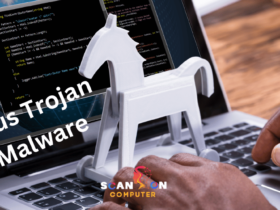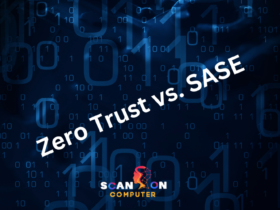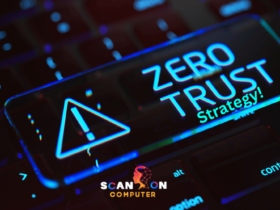Identity-related cyberattacks have emerged as an increasing business risk. Such attacks expose confidential data such as usernames, passwords and digital certificates in order to commit fraud and gain entry to systems or networks without authorization.
Identity compromise, lateral movement and privilege escalation are three hallmarks of interactive cyberattacks across industries including telecommunications, healthcare, financial services and transportation.
What is an Identity Based Attack?
Cybercriminals often try to stay inside an organization after breaching its perimeter and resist security teams’ efforts to expel them by exploiting trust relationships that identity tools like IdPs and PAM use to manage who has access to applications.
The 2021 Verizon Data Breach Investigations Report found that human errors account for 85% of breaches, with stolen or compromised credentials making up most attacks against any organization. Protecting identity should always remain an organization’s top priority.
But this can be a challenging endeavor as attackers often hide behind false flags and misconfigurations. To combat these threats, organizations need continuous visibility of all identities and privileges across dynamic environments – something Identity Security Insights offers. With its combination of EDR and IDR capabilities, this powerful synergy thwarts attacks at every stage of the threat lifecycle.
8 Different types of identity-based attacks
Identity-based attacks have become an increasing threat on the threat landscape, from credential theft to accessing privileged systems. Cybercriminals use stolen credentials to exploit trust relationships between victims and companies while also gaining entry to sensitive data that could later be sold on dark web markets for profit.
According to the 2022 Verizon Data Breach Investigations Report, stolen credentials are one of the main drivers behind breaches. Therefore, it’s essential that strong security practices be put in place in order to guard against these attacks and safeguard against these exploits.
Use of a digital resilience platform that tracks user activity can detect any unusual activities, such as attempts to authenticate into honeypots and fake log-in pages designed to lure attackers. Such platforms then send alerts directly to SIEM, SDR and XDR systems allowing easier detection and response during an attack.
Have You Experienced an Identity Breach? If you have, you know its effects can have disastrous repercussions for your business, from lost productivity to damaging reputation. Therefore, it’s crucial that proactive steps be taken in order to prevent further breaches, such as multi-factor authentication (MFA) for all employees and partners.
1. Credential Stuffing
Credential stuffing is a cyberattack in which stolen login credentials are used to test for access on other systems. Attackers typically gather a list of usernames and passwords from data breaches or dark web marketplaces, then attempt as many times as possible to log into other services using them in hopes that at least some will work – this process may include automated bot software programs designed specifically to maximize login attempts.
Businesses can be vulnerable to devastating cyber-attacks when hackers gain entry to systems using valid account credentials and gain entry, using them to install backdoors, steal data or even take over operations for themselves. Furthermore, conventional security measures may take months to detect an attack.
Cybercriminals often leverage credential stuffing attacks successfully by exploiting users who reuse the same user ID and password across multiple accounts – an act which should be discouraged at all costs by individuals seeking to protect their online identities.
2. Identity Theft
As more personal and professional data has become exposed online during this pandemic – from remote working to digital transformation – cyber attackers have taken notice. Attacks targeting this data include phishing, credential stuffing, impersonation and fraud attacks. Exploitation of identity-based data can have serious repercussions for both individuals and businesses in terms of reputational damage, fines or legal fees.
As attackers use identities for Lateral Movement and privilege escalation, they need a means of bypassing security systems. Multi-factor authentication provides such an avenue by verifying users multiple times before sensing any suspicious activity from hackers looking to break into an account. A hacker trying to crack into one must attempt several passwords or accounts before the system detects something amiss and alerts him/her of this possibility.
A strong password is your best defense against this threat; make it unique using uppercase letters, special characters and numbers for added strength. Companies can also implement CAPTCHAs and deploy identity threat detection and response solutions (IDTR) in order to monitor anomalous user behavior which will then send information directly into SIEM, SOAR and XDR systems which will prevent attacks without negatively affecting user experiences.
3. Impersonation
Under this type of attack, hackers pose as legitimate users or services in order to obtain or steal valuable information such as usernames and passwords, financial details, or digital certificates.
Cybercriminals use social media platforms like Facebook and Instagram to investigate potential targets and select an individual they will pose as. Once identified, cybercriminals use hacking or lookalike accounts to gain access to this individual’s account; then send emails or messages purporting to be them using familiar language and pertinent details about recent company events.
Cousin domain attacks involve creating websites that look very similar to bank websites in order to lure their targetted user into clicking on a link that leads them into an underground web that captures sensitive data or downloads malware, often used by hacker groups like APT28 and Fancy Bear.
4. Man-in-the-Middle MitM Attacks
Man-in-the-Middle (MitM) attacks enable cyber criminals to intercept communications between two trusting parties, giving them a privileged eavesdropping position from which hackers can gain access and use this opportunity to steal sensitive data or breach an entire network. Attackers typically target banking, online retail stores or software-as-a-service platform customers as targets of these types of attacks.
DigiNotar MitM attack of 2011 resulted in millions of users being defrauded of their banking credentials due to an intrusion that allowed hackers to compromise certificate authorities and issue fraudulent certificates.
All data passed between banks and users were routed directly to criminal hackers, who then monitored passwords submitted in login forms to steal money or make unapproved purchases. Another form of MITM attack includes creating fake websites or emails accounts designed specifically to steal login credentials; frequent disconnections from services or having to sign in repeatedly can also indicate an MITM attack, as cyber criminals seek to obtain as much data from both communicating parties as possible – making StrongDM Dynamic Access Management platform’s cybersecurity controls specific for these attacks such an indication.
5. Golden Ticket Attack
An successful Golden Ticket attack provides attackers with complete access to any compromised network, creating havoc within IT departments and costing millions in repairs.
This type of attack exploits our natural tendency to trust emails from familiar sources and reuse passwords across multiple accounts, providing attackers with a direct route into company networks. Once inside, attackers can bypass security layers, establish persistence, and move laterally into networks stealing data or controlling systems.
Hackers use password spraying as an attempt to remain undetected, guessing multiple weak passwords simultaneously and creating the illusion of failed login attempts without raising suspicions.
Organizations need a multilayered defense against this form of attack in place, including advanced threat detection and real-time identity threat prevention – for instance CrowdStrike Falcon Identity Threat Protection provides hyper accurate threat detection while simultaneously blocking identity-based attacks using AI, behavioral analytics and flexible policy engines that enforce risk-based conditional access policies.
6. Kerberoasting
Attackers use stolen identities to gain unauthorised access to systems, networks and cloud services. Such attacks can be especially devastating for organizations which rely on Kerberos authentication protocol for secure authentication purposes.
Kerberoasting involves attacking service accounts created by IT teams for various IT projects. Since these privileged accounts often aren’t protected or monitored, attackers can gain entry quickly through this technique.
The attack works by stealing password hashes from privileged accounts and brute-forcing them against servers that authenticate users, leaving few traces in the environment while being difficult for security teams to detect and respond to due to not requiring users to actually utilize services themselves.
Organizations should prepare themselves for identity-based attacks in highly sensitive industries like financial services or telecom. Such attacks can have devastating repercussions for privacy of both individuals and companies alike, disrupt business operations and damage brand image. To safeguard against such threats, security teams should regularly review identity data usage to detect any anomalous user activity and take immediate steps against it.
7. Pass-the-Hash Attack
As businesses move towards remote working and digital systems, cybercriminals have taken to targeting employees and organizations to exploit personal information for personal gain. This is particularly prevalent within industries responsible for critical infrastructure like energy, telecom, healthcare and transportation where any exploitation of personal data can have serious repercussions.
Pass-the-Hash Attacks involve threat actors stealing a user’s password hash rather than their actual password by manipulating New Technology LAN Manager (NTLM), then using that hash to authenticate themselves as system administrators in an authenticated session masquerading as their login details.
Once an attacker gains access to your network, they can utilize hash harvesting techniques to gain entry to other devices and accounts in it – eventually using those stolen hashes to gain privileged accounts with access to more sensitive information.
Pass-the-Hash attacks are among the most prevalent threats facing Windows systems, and can be combatted through security tools that monitor login activity to identify irregular behavior and implement strong password requirements during account creation processes.
8. Silver Ticket Attack
Identity-based cyberattacks are among the most dangerous cyberthreats. Not only can they lead to financial losses, data breaches and regulatory penalties — they can also damage a company’s reputation and reduce customer confidence.
Threat actors utilize stolen credentials to move laterally throughout an organization’s infrastructure, increasing privileges and accessing critical resources. Their attacks often exploit vulnerabilities within its identity ecosystem such as misconfigurations, unapproved user or service account accesses, password spraying and Kerberoasting attacks.
Multi-factor authentication (MFA) can provide a strong defense against silver ticket attacks. MFA requires attackers to go through several verification methods – email address, phone number or device verifications – before they gain entry to your system. This ensures that an attacker obtaining your username and password doesn’t give them instant unauthorized access; cybersecurity experts often recommend MFA be the default setting on all accounts because phishing, malware or brute force attacks don’t make progress without MFA being in place first.
How Can You Prevent Identity-Based Attacks?
Due to companies’ increasing reliance on remote work, attackers now have access to unprecedented identities data. They take advantage of security gaps within systems used for identity management such as application credentials or cached passwords on endpoints to gain entry.
Step one of preventing identity-based attacks is securing passwords. Password spray is an attack where cybercriminals combine stolen login credentials from one system with several usernames on other systems in order to bypass blocked accounts after multiple failed login attempts, using stolen login credentials from one system with stolen usernames from another system and multiple failed attempts on others. A password manager is one effective solution that can protect passwords and help avoid these types of attacks.
Implementing multi-factor authentication can also provide protection from identity-based attacks. With multi-factor authentication, users must go through several verifications of their identity before being allowed access to any accounts; even if hackers gain a valid username and password combination for one account, they cannot log on as intended due to multiple verification processes requiring multiple attempts before successful login attempts can take place – making multi-factor authentication a key defense against credential stuffing attacks or man-in-the-middle attacks, and keeping attackers from taking full control over one account through session token theft or session hijacking attacks.
Identity-Based Attacks and How to Prevent Them
Cyber attackers are increasingly taking to assuming false identities to gain entry to networks, systems and cloud services without detection by detection tools. By using stolen identities to gain entry, cyber attacks can gain access to networks and services without being detected as easily.
Identity-based attacks pose one of the greatest threats to organizations today, which is why security professionals need to proactively defend against these risks.
1. Deactivate Dormant Accounts
Financial institutions typically deactivate accounts that remain dormant for three years (this may differ depending on your state), at which point it becomes dormant and potentially accessible by threat actors who can use its information in an identity-based attack.
Threat actors use identity-based attacks to gain unauthorized entry to systems, networks and cloud services and gain unauthorized access to sensitive data and disrupt business operations. Such attacks have serious repercussions for industries and companies that rely heavily on identity-driven security, including telecoms, finance services, healthcare providers, transportation providers and energy.
Cyberattacks that target critical infrastructure sectors, like telecom, energy and water utilities, can be difficult to identify; in some cases it can take up to 250 days before companies even realize there was an attack. Multi-factor authentication, implementation of least privilege access control and having an identity risk mitigation strategy that includes service account protection are effective ways of mitigating such attacks; these measures must also prioritize identity-driven security measures to protect customer and employee identities against attack.
2. Get Multi-Factor Authentication
With the rapid shift towards remote working and digital transformation, businesses have become more dependent on identity technologies than ever. Unfortunately, a recent report released by Identity Defined Security Alliance (IDSA) indicates that cyberattackers are taking advantage of this dependency to compromise systems by targeting digital identities or even taking over them completely.
Stolen identities, credentials, and access tokens allow attackers to gain unauthorized entry to networks, applications, or sensitive data. Furthermore, these assets can also be leveraged against users and applications to impersonate them and disrupt operations or extract ransom payments from them.
Multi-factor authentication (MFA), which uses more than just username and password verification methods, provides the ideal defense against such attacks. MFA relies on using at least two verification factors such as knowledge, possession or presence to authenticate users.
MFA systems work by sending a code directly to users’ phones that proves they possess them – this makes it much harder for hackers to breach first step breaches such as Pass-the-Hash or Silver Ticket attacks, helping MFA protect identity-based attacks such as Pass-the-Hash or Silver Ticket attacks.
3. Implement the Least Privilege Access Control
Implementing least privilege access control is essential to protecting against identity-based attacks. By segregating high-level system functions from lower-level ones and critical from non-critical, you can better understand who has access to what and ensure data stays safe.
Once an attacker successfully compromises an identity, they will look for opportunities to move laterally through your infrastructure and increase their privileges – such as taking on roles within AWS, GitHub or O365 where their access has been gained.
A great way to prevent this situation from occurring is through least privilege access control, which centralizedly manages and safeguards privileged accounts and credentials for both human and machine entities. By adopting this strategy, security can be increased while risk is decreased while productivity remains intact.
Review your privileges regularly is also key, setting a schedule to review them (monthly/quarterly for newer companies and biannual for mature ones with more accounts). This enables you to identify any suspicious or dormant accounts and then remove their access proactively.
4. Improve Password Culture
As cyberattacks become more sophisticated, identity should become the new security perimeter. Attackers can exploit stolen or compromised identity credentials to access systems, networks and applications; access data stolen; steal personal information and disrupt business operations.
Identity attacks account for most data breaches; however, there are ways to combat this threat effectively and reduce the risk. Businesses can implement stronger authentication and authorization systems, improve password culture and utilize MFA products with anti-phishing resistant capabilities in order to ward off identity attacks and decrease their risks.
Password spraying is a commonly employed tactic by threat actors to gain entry to an account. They combine a common password with multiple usernames in an attempt to breach it through brute force or man-in-the-middle attacks, appearing like valid users and evading detection for longer. Therefore, using strong, unique passwords across all accounts with frequent changes as an easy way to protect against identity-based attacks is crucial. Furthermore, making sure users do not reuse passwords or use common words is another excellent way of helping safeguarding against these types of attacks.
5. Cybersecurity Awareness
Cyber security awareness can help both organizations and their employees better understand the threats that exist to your operations, how these affect them, as well as learn the best practices to prevent identity-based attacks and how identity theft occurs. End-users should practice safety when browsing or checking emails while IT professionals must remain hyper-aware of security risks their networks face and regulations they abide by.
Ensuring everyone understands the significance of cybersecurity includes making them aware of its significance by following basic practices such as using two-factor authentication and not sharing passwords between accounts, connecting only to secure Wi-Fi networks or VPNs and updating operating systems and software regularly – these actions will prevent attackers from accessing personal or company-managed information and breaching critical data systems.
Identity-based attacks continue to present businesses of all sizes with a serious threat, from financial losses to damage to reputations. With remote working cultures becoming more widespread, these kinds of attacks will only become more frequent and severe over time.










Leave a Reply
View Comments